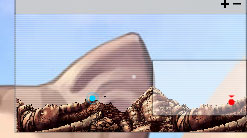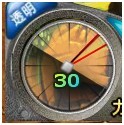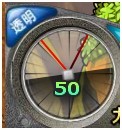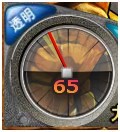DDTank Basic Shooting Guide
DDTank Basic Shooting Guide by Lust

Hello, all you DDTankers! There’s been a lot of curiosity among our players on the forums about the many different strategies for success in DDTank and one word keeps popping up: equation.
I’ll bet you didn’t believe your high school math teacher when s/he told you that math was useful, did you? Well, it is. Make your teacher happy and check out this guide to get started learning how to improve your game by calculating amazing angles to help you pull off amazing shots.
Please feel free to add your knowledge to this thread, as the guide can always be improved.
Guide Contents:
1. Mastering the Basics
2. Measuring Your Shot
3. 30°, 50°, and 65° Angle Shots
4. “Straight-Up” Techniques
I. Mastering The Basics
The most important thing to strategy and tactics? Knowing the basics and knowing them like they’re second nature!
As a player heading into the territory of advanced tactics, you need to know the basics without having to think about them. If you try and step up your strategy without having a firm grasp of how the controls or functions work, these tactics will likely seem very difficult. Instead of jumping right a head, and take a second to review the basic functions until you’re sure you can do them without much thought.
Angle and Movement:
↑ and ↓ – These keys adjust your shooting angle.
← and → – These keys move you left and right (and also adjust which side you shoot toward, of course!)
Power Meter:
The power meter displays the intensity and power behind your shot. The longer you hold down the space bar, the further your shot will travel. Use the ruler displayed on the power meter to help guide how much intensity you need for the advanced tactics!
Teleport:
As you become a more advanced player, you’ll learn quickly that getting the upper hand in a match isn’t always about who’s got more levels or better gear – it’s about strategic placement and using your noggin!
So, what can you do when your health is dangerously low? Use the airplane to teleport to a safer place. Your enemy hiding behind a thick wall, or in an angle that makes it difficult to shoot? Teleport to a better vantage point. Use the fact that you can move great distances with the airplane to your benefit!
II. Measuring Your Shot
Sure, it’s fun to gauge based on your gut feeling – but it’s also fun to calculate your angle, and the tools are provided to you to do it!

You know that mini-map located in the top right corner of your screen? It’s more than decorative – it’s one of your primary tools for gauging your shot.

1. Using your mouse, drag the white rectangle in the mini-map to center it on two players. Typically, this should be yourself and your opponent.

2. The white rectangle is 10 units across. Thus, if you put the dot representing YOU on the edge of the white rectangle, and your enemy is on the inside, it is less than 10 units. You can also drag the rectangle as many times as necessary to measure the distance between you and a far opponent.
3. Divide the white rectangle into subsections to help you accurately gauge the distance between you and your opponent.
This unit number will be key in many of your tactics and strategic calculations. Knowing how to calculate the distance between you and your target is key for becoming an advanced player.
III. 30°, 50°, and 65° Angle Shots
There’s any number of angled shots you can make – advanced players will find that they’ll base their future techniques off the 30, 50 and 65 degree angle shots.
Each chart with each angle will dictate the optimal power intensity for each particular shot. But it’s not going to guarantee you a hit. Why? Wind resistance.
You’ll need to keep this very important concept in mind when viewing the subsequent charts and angle equations.
The 30 Degree Angle

Shooting at a 30° angle means you adjust weapon to fire at a 30 degrees. Although it has limits, this technique lets you fairly reliably hit your target.
Once you’ve established how many units your target is, you’ll follow the following scale to determine what intensity to give your shot:

This chart in mind, it’s time to add Wind Resistance into the chart:
Simply, if you’re shooting against the wind, you’ll need to add the total wind to your angle. For example, if you’re using a 30 degree angle, and the wind is at 2 and you’re shooting against it, you’ll need to adjust your angle to 28. Likewise, if you’re shooting with the wind, you’ll need to subtract it from your angle, or you’ll overshoot your target. Thus, if you’re shooting in the same direction of the wind, and it’s at 1, you’ll need to adjust your angle to 31.
30° Angle Equation: 30° + or – Wind Power = Angle
With wind (+)
Against wind (-)
The 50 Degree Angle

50 degree angle chart:

Calculating wind for the 50 degree shot is similar to the 30 degree shot, except you double the wind power. Thus:
If shooting against a wind of 2, you’ll need to adjust your angle to 46°.
If shooting with a wind of 1.5, you’ll need to adjust your angle to 53°.
50° Angle Equation: 50° + or – (Wind Powerx2) = Angle
With wind (+)
Against wind (-)
The 65 Degree Angle

65 degree angle chart:

Calculating wind for the 65 degree shot is similar to the 50 degree shot, you double the wind power. Thus:
If shooting against a wind of 2, you’ll need to adjust your angle to 61°.
If shooting with a wind of 1.5, you’ll need to adjust your angle to 68°.
65° Angle Equation: 65° + or – (Wind Powerx2) = Angle
With wind (+)
Against wind (-)
IV. “Straight-Up” Techniques
Curious how to make some wicked cool shots with 90° shots? Well…here you go!
Semi-Throw Technique
This basically means you don’t use all your strength to shoot. You set your angle to 90°, and then reduce it according to distance, with the intensity always set at 60
Semi-Throw Equation: 90° – (2 x distance) + or – (2 x Wind Power) = Shot Angle
With wind (+)
Against Wind (-)
Example If unit distance is 7, and Wind Power is 1.9 against you, your angle would be:
90° – (7 x 2) – (2 x 1.9) = 73°
High-Throw Technique
This basically means you throw things straight up and watch them fall on your opponents head, which is always pretty amusing. The intensity of this shot is always set at 95.
High-Throw Equation: 90° – distance + or – (2 x Wind Power) = Shot Angle
With wind (+)
Against Wind (-)
Example If unit distance is 15, and Wind Power is 2.7 against you, your angle would be:
90° – 15 – (2 x 2.7) = 70°
Ignore fractions/decimals.

I would like to know which motion equations are used in the game. For example: A = vo² . sin2θ / g
This was really helpful. Just what I needed :)
Very helpful